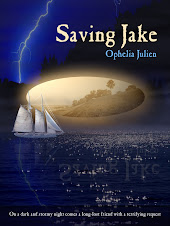Years ago, I remember talking to someone about how Chicago seems to attract disasters centered around fire. If you say the words "Chicago" and "fire" in the same sentence, everyone instantly thinks about the Great Chicago Fire of October, 1871. The fire burned for over two days, killed up to 300 people, and destroyed 3.3 square miles of the city. It was a horrible tragedy, although not many realize that at that same time. Peshtigo, Wisconsin was suffering a similar but worse fate: a firestorm with 1500-2500 people killed. The entire Midwest had been struggling through a dry summer and by that fall, the heat and the drought made conditions perfect for catastrophic fires.
But Chicago didn't stop with the huge fire of 1871.
On December 30, 1903, the Iroquois Theater Fire killed 572 people on site with an additional 30 dying later, bringing the total count up to 602. The alley behind the building is considered to be haunted (people trapped inside the building, jumping to escape the flames, were also jumping to their deaths in this alley). Amazingly enough, the theater was rebuilt and opened asst one point as the Oriental Theater. It has since morphed into the Ford Theater and is a popular destination for musicals.
Goodyear's dirigible, the Wing Foot, crashed into the Illinois Trust and Savings Building on July 21, 2019. Twelve people in the building died when the fuel from the dirigible sparked a fire that barred any rescue attempts.
There was a huge fire on May 19, 1934 at the Union Stock Yards. Thankfully, no one died in the blaze, but it took 1600 Chicago firefighters, helped by additional men with equipment from 31 different suburban firehouses, to put it out.
In 1946, The LaSalle Hotel caught fire on June 5. According to Troy Taylor of Weird and Haunted Chicago fame, the owner of the LaSalle had claimed it was fireproof. The fire that blazed through the building saw 200 injured, 30 hospitalized, and 61 killed.
All of these fires that saw so much loss of life are tragic. But perhaps the most biggest heart breaker was the fire at Our Lady of Angels School, December1, 1958. The fire claimed the lives of 92 children and 3 nuns. Veteran Chicago journalist Hugh Hill, who had been a cub reporter at the time, was sent to the school after being told that it was "just a fire at a school." What he found would stay with him the rest of his life. On a documentary about the tragedy, he spoke about parents coming to the makeshift morgue to identify their children, sometimes making that identification by a necklace or a shoe, because that would be the only thing recognizable. He said the morgue was the scene of quiet shock, and that the entire site was hushed with grief. That fire left scars on the neighborhood, the parish, and every family it touched. It also led to changes in fire and safety codes across the entire country.
All large cities have tragedy in their histories, and that is no surprise. I would have to do a lot more research to see if my old home town has had more than its share of fires but so much of its fairly short history (compared to other world cities like Beijing or London or Rome) is written in flames. And I can't help but wonder why that would be.
Information on the Union StockYards Fire and additiona linformation on the LasSalle Hotel Fire from www.ChicagoTribune.
Information on the rest taken from Weird and Haunted Chicago, Troy Taylor.





No comments:
Post a Comment